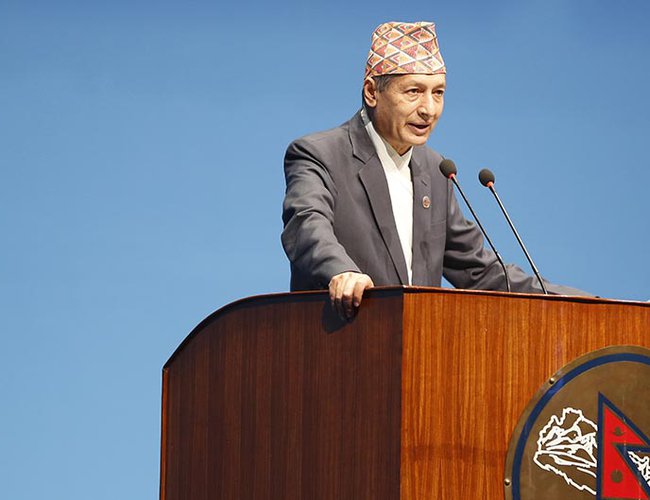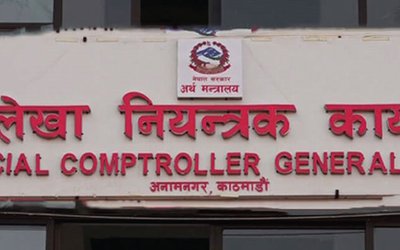
By all accounts it is a historic budget. For two reasons:
one, the first to fiscally incorporate federalism: and two, for its long-term
vision- obviously driven by the fact that this is a government here to stay for
five years.
One may even add a third reason – that it is drawn up in the context of a near-defunct NPC, which, in the past, was more oriented to foreign donors’ interest rather than the national political ideologies and manifestos of the dominant political parties and national macroeconomic realities on the ground.
One reads from the morning papers that the Chief Ministers of Provinces are unhappy with the budget arguing that it is not ‘province-centric’. One wonders what exactly they have in mind when their development capacity is yet untested and remains an unknown. I submit, the allocation of 33% of the national budget to them is sound and smart; and even smarter on the Finance Minster’s part for allocating Rs 195.05 billion to local governments compared to only Rs 113.43 billions to the federal bureaucracy.
During the Parliamentary debate on the President’s Address on the ensuing Budgetary Policies, it was argued by the Nepali Congress that the policy looked liked a kitcheri of aspirations lacking priorities and prioritization over programs. Clearly, with the allocation of Rs 1.09 trillion out of the total planned expenditure of Rs 1.31 trillion would suggest that priority is to the transport and energy infrastructure sectors.
The Budget targets GDP growth at 8% for next year. It goes on to state that it seeks annual 10% GDP in the next 5-6 years. This is highly doubtful. Our long term GDP growth stands at only 3.5-4.5 %. To get to a new long term sustained growth path of 5.5-6.5% would call for massive structural reforms in the economy given the challenges posed by a growing debt to GDP ratio; Balance of Trade and Balance of Payments of deficits; huge need for Revenue (expected growth this fiscal year is a whopping 33.7%) and crowding out the private sector’s demand for bank credit with government’s demand for more funds for itself.
Two features of the Budget surprised me most. They are the allocation of the largest sum to the PMO(Rs 156.28 billion)and the lack of in depth focus on the biggest challenge to the Budget—EXECUTION, which has been the Yeti or missing link of the entire Budget implementation process in Nepal, especially with the advent of the Republican era. Are we to now expect that the PMO system will turn all this around once for all? Under PM Oli it is true that capital expenditure did ameliorate to close to 20% of the planned expenditure. However, for the target GDP growth of 8% to be achieved it would necessitate around 90% of the planned capital expenditure be spent. No doubt, his brave recourse to the market mechanism by getting rid of cartels and syndicates will enhance efficiency and better allocation of resources as well adding to the state’s revenue by eradicating monopolies and oligopolies. This drive must be further extended to all sectors, other than transport and construction only towards safeguarding consumer welfare and maximizing ease of doing business that will increase private investment by leaps and bounds, especially by the MSMEs which contribute most to employment creation. Unfortunately, the Budget remains silent on the need to create a powerful Competition Authority.
Additionally, regarding execution one expected more from the Finance Minister on what reforms were to be expected on the core reasons for project delays – land acquisition, competitive tendering process and lack of projects with Ministries.
On second thought I should mention that given all that the Finance Minister had to say in the White Paper on waste and misappropriation of taxes, there was no mention of a national austerity drive. However, he must be applauded for his commitment to close down unproductive embassies (e.g Spain, Austria, Canada)
One appreciate the balanced manner by which the Budget treats export promotion and import substitution. True he has reintroduced subsidies especially to boost the agricultural sector. There are undoubtedly huge dangers of them being misused. Perhaps the Finance Minister might have opted for indirect subsidies in preference for direct subsidies to avoid misuse by local politicians. Better still, he should have devalued the Nepali Rupee to the Indian both for his goal of self sufficiency in agriculture; to protect industries and boost exports. However, he must be congratulated for modifying the Constituency Development Fund going directly to MPs with his version of the fund that will support local infrastructure.
The policy to support entrepreneurship development with up to Rs 700,000 loan with just 5% interest should, hopefully, lead to mushrooming of Entrepreneurs’ Clubs amidst the Business Schools in Nepal . The practical educational worth of these colleges should be judged henceforth on how many such start ups it bagged?
Finally, one can expect big business to not be enamoured too much by this Budget especially given the new income tax policy. Perhaps, the Finance Minister should have also levied the income tax on the agriculture sector. Small farmers and MSMEs, however, should welcome this budget for the priority it receives which include an attempt to create industrial hubs while supporting skill development by the educational sector.

Prof. Madhukar SJB Rana
Executive Director, SAIM Leadership & Executive Development Center and Former Finance Minister . He can be reached at madhukarsjbrana@gmail.com
- People Public Private Partnerships
- Nov 29, 2018
- An Alternative Meaning Of Inclusion And How Nepal Should Strategize
- Nov 20, 2018
- Nepal: A Country In Transition
- Aug 12, 2018
- The Fundamental Reality Of Our Currency Union With India With Its Pros And Cons
- Jun 12, 2018
- An alternative Meaning Of Inclusion And How Nepal Should Strategize Development 2018-2025
- Apr 06, 2018
















